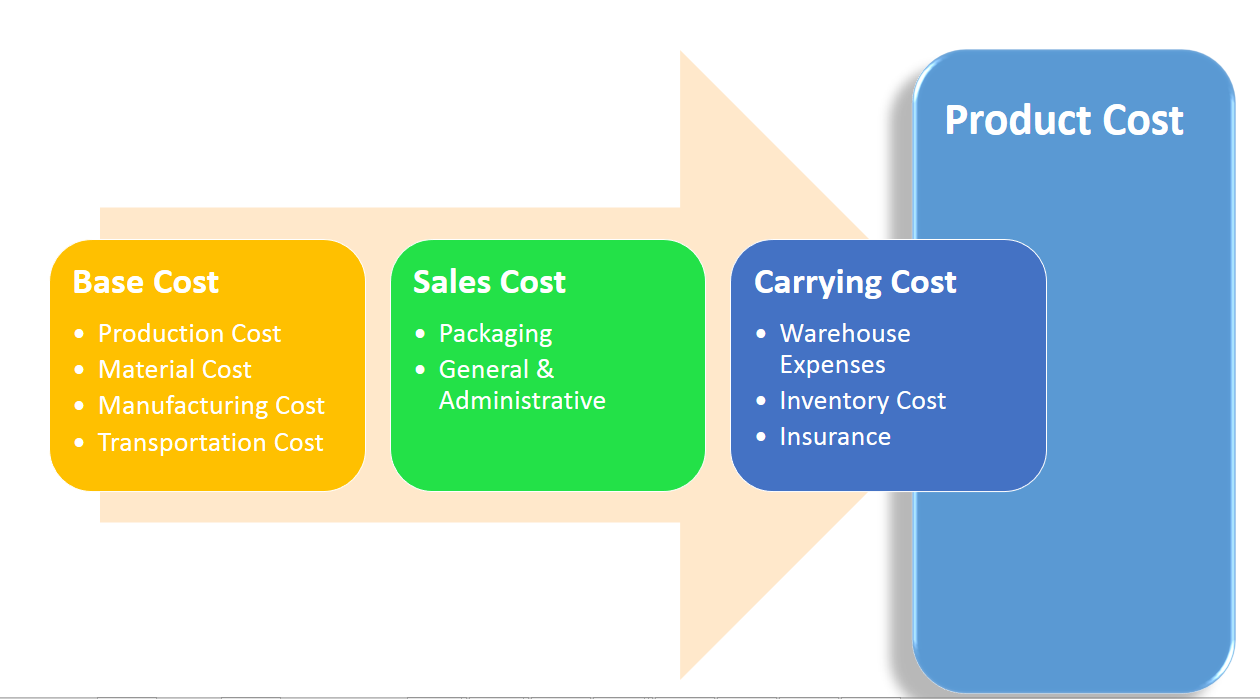Download PDF
Download page Managing Cost and Profitability (Cost Breakdown).
Managing Cost and Profitability (Cost Breakdown)
Cost of a product, as you see it, is derived from aggregating direct, indirect and variable costs. These costs could be manufacturing, Sales, Administrative, volume-based or any other miscellaneous cost.
For example, the Cost of a Drilling Machine is an amalgamation of costs from various sources incurred during the life cycle of the product - such as raw material, production, labor, time, taxes and other marginal costs. While some of these costs remain stable, some vary depending on the volume, availability or other market conditions.
To cite another example, the price of a watch is derived from the summation of the cost of designing, manufacturing, packaging and shipping. Similarly, if your product is a service, cost can be derived from several dependent factors such as infrastructure, security, fulfillment and others. In a nutshell, for all products, such finer cost elements that are associated with the product life-cycle, together constitute the final cost.
As a Sales Rep, when you are adding products to the cart during the Quote generation process, adding margins and reaching the profitability of the deal will become easy if you can see the cost elements which is precisely the cost break-down of a product.
Visibility of the cost hierarchy for a product that captures every granular cost will empower you to prepare a profitable Quote that leaves no room for generalization and approximation.
When you know the key cost drivers and can see how what other costs contribute to the key cost, you know which costs should be tweaked or modified for arriving at an optimum cost.

The cost models, as you can see in the above illustration, are nothing but the structure of cost elements and sub-elements participating in deriving the final cost. The cost hierarchy gives you the granular level of details regarding the various aspects of product costing.
With CPQ, you can create complex Cost Models that give insights into the true profitability of a product price. During the quotation process, this transparency of costs can provide accurate deal margin decisions that are critical for thriving in the competitive market.
Start implementing the cost model for your products to
- Achieve Effective Deal Guidance,
- Eliminate the need for an external Cost Management application, and
- See the price breakdown and assess the profitability of your quote.
Key Terms
| Term | Description |
|---|---|
| Base Price | The basic product price without break-ups. |
| Mark-up | Additional cost incurred for a product to create a profit. |
| Fixed Costs | Costs that do not vary for a long period of time are considered as Fixed Costs. For example, Maintenance Costs, Renting or leasing of assets, Property Insurance etc. |
| Variable Costs | Costs that are volume-driven or change frequently with time are regarded as being variable. For example, raw materials, labor, social expenses, training etc. |
There are three key facets of this feature:
- Price breakdown
Earlier you could associate only a single cost to the product. Because the cost is dependent on various factors some of which might vary, a single field defining the cost was very limiting. With cost models in place, you can define the variable and fixed cost elements and achieve dynamic product costing. This approach is the best way to ascertain what a product should be priced at.
For more information on how you can configure and store the granular costs associated with your product, see Storing the Price of Products. - Transfer Price
Setting the price for goods or a product between legal entities within an enterprise is known as Transfer Pricing.
The transfer price is the price at which different goods and services are transferred between divisions within an organization. For example, a division of Motor Company- A, based in South Africa supplies Gears to their global assembly plant in Boston. The division in South Africa will charge the division in South Africa with the cost of the Gear including their profit margin. This price should be an amount that benefits the organization and also allows each department to have a fair share of their profits.
Majorly, a Business Unit or Factory "sells" to the front end sales team. There are regulatory requirements around how the transfer price is calculated. OECD (Organization of Economic Cooperation and Development) has set some guidelines and most countries follow or add-on to those guidelines. For more information on how you can create a Transfer Price mapping, see Configuring Transfer Pricing. - Price Waterfall
You can Analyze a Quote by looking at the Price Waterfall chart and Waterfall table for corresponding Line Items and Summary groups. The waterfall chart is a bar graph where Line Item Fields are plotted vertically and Cost is plotted horizontally. For more information, Analyzing Quotes.
We’ll take a detailed look at each of these aspects in the later sections.
Required Configurations
A way to arrive at accurate costing is to dissect the cost into different elements, roll-up this cost and apply markups to finalize it. These elements are identified as Cost Types in the system.
Let us see how you can start creating a cost hierarchy for your products and analyze the margins on the cart. To get started, you need to:
- Define a Cost Model.
- Set a Cost Hierarchy by adding Cost Types.
- Associate the Cost Model with a Price List.
- Configure a Presto App (using X-Author) to store product prices.
- Fetch prices for the Cost Types by adding a Presto Callback.
- Analyze pricing from Analyze Quote button on the cart.